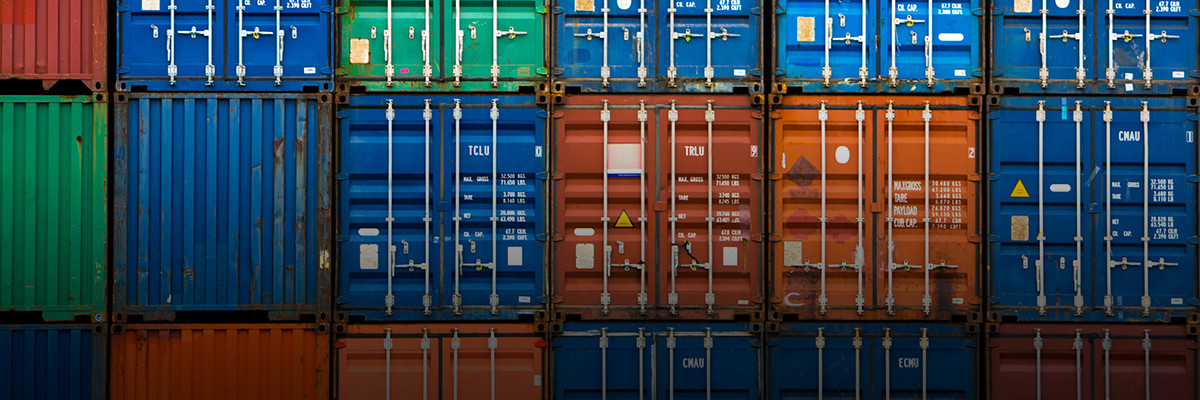
Authors
-
Nate Springer
Former Manager, BSR
Freight movement is the lifeblood of global supply chains and economic development in many regions. It is also at the heart of many 21st-century challenges to global business: Markets want shipping to be faster, more flexible, and more sustainable. Yet freight is a distributed, global system, in which no single entity controls central decision-making—and, likewise, green freight efforts are dispersed and interconnected in unexpected ways.
These conditions require collaboration to make progress. For example, last year, governments around the globe ratified an agreement to drastically cut greenhouse gas emissions that contribute to climate change by midcentury. Freight is responsible for 7 percent of these emissions and is one of the fastest growing emissions sources—but who along the value chain, specifically, should be accountable? And how does the responsible party work with business partners, governments, and logistics suppliers to be more sustainable?
BSR’s Clean Cargo Working Group (CCWG) has been addressing these questions within the shipping industry for nearly 15 years. It offers a prime example of successful green freight collaboration: a business-to-business leadership initiative involving major brands, cargo carriers, and freight forwarders dedicated to reducing the environmental impacts of global goods transportation and promoting responsible shipping.
In our work, which now represents 85 percent of ocean container shipping volume, we have seen the value to companies in addressing these challenges collaboratively. We have learned there are several reasons why globally dispersed green freight challenges like a greener shipping industry require collaboration:
- Alignment and standardization is impossible for any single company. Freight carriers cannot track their own improvements, and shippers cannot compare the environmental performance of their carriers, unless all parties use the same standards. Therefore, we facilitated collaboration among carriers and shippers to develop a standardized methodology for reporting environmental performance. This has allowed CCWG to track emissions reductions in the group: Our member carriers have reduced their emissions by more than 34 percent per container, per kilometer since 2009. Members work together annually to refine the methodology and improve their performance management tools, including, most recently, by updating our verification protocol. This protocol, which ensures data quality with third-party assurance, now covers 100 percent of our carrier members. And we shape alignment across the entire logistics value chain through our influence in the Global Logistics Emissions Council (GLEC) framework and with BSR’s partnerships with the U.S. Environmental Protection Agency’s SmartWay, Green Freight Europe, Green Freight Asia, and other initiatives.
- Integration stalls without discussion and best-practice sharing. Companies encounter many of the same issues when integrating environmental performance into their business decisions. Through CCWG, we created a forum for discussion and sharing best practices, which we complement with members-only reports, case studies, meetings, and webinars. Our members consistently rate our in-person member meetings, held in different regions twice each year, as one of the top values of the group. We bring together representatives from our 45 member companies and select industry experts for two-and-a-half days of presentations and discussion on green freight trends, to make progress on our own work plan, and to enable members to share best practices. Members return from these meetings and then disseminate this information to colleagues, start new projects with their business partners and other stakeholders, and apply lessons to accelerate progress on their own goals.
- The best solutions come from across the value chain. Freight shipping involves a range of stakeholders, and profitable progress on sustainability depends on many contingencies among them. In CCWG, we create a space where industry and other experts can tackle challenges, such as performance measurement, and where we can build a collective voice to catalyze change in other areas. In October 2016, our members jointly released a climate statement and call to action to announce the industry’s intent to continue making progress on climate action, while calling on innovators and policymakers to double down on finding solutions. We are just now finalizing research that will define an emissions reductions pathway for the container shipping industry that will match the ambition of the global climate goals, as well as a commitment to progress that each of our member companies can make and track publicly.
Through our work with and support of the GLEC, one global framework for logistics emissions accounting now exists across all freight modes. Yet we will need to expand standardized data collection efforts into other geographies—Africa, Asia, Latin America—and in other modes, such as air and rail. Once this challenge is overcome, collaborations like CCWG will be able to consolidate and harmonize data on emissions, providing clear guidance for carriers and clear metrics for buyers. CCWG will continue to support and drive these efforts collaboratively and globally.
At BSR, we are excited about the future for CCWG—and we continue to extend these lessons to other green freight challenges through our Future of Fuels initiative, as well as to other challenges on the 21st-century sustainable business agenda through our more than 20 other industry collaborations.
For more information on CCWG or to speak with the team, please email ccwg@bsr.org.
This blog is part of our February spotlight on collaboration. To find out more about BSR’s Collaborative Initiatives, read our overview blog or visit the Collaboration page.
BSR’s latest sustainability insights and events straight to your inbox.
Topics
Let’s talk about how BSR can help you to transform your business and achieve your sustainability goals.







